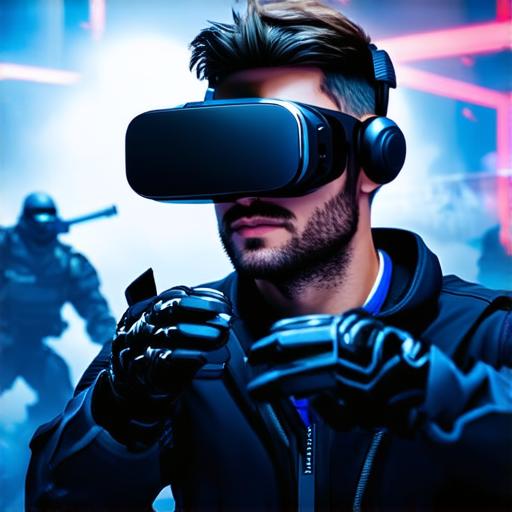Introduction
Virtual reality (VR) and mixed reality (MR) are two technologies that have been gaining popularity in recent years. While they share some similarities, there are also key differences between them. In this article, we will explore what VR and MR are, how they work, and their potential applications. We will also discuss the benefits of each technology and compare them to help you understand which one is right for your needs.
What is Virtual Reality?
Virtual reality is a computer-generated simulation that creates an immersive experience for the user. It involves wearing a headset or goggles that track the user’s movements and adjusts the environment accordingly. This creates a sense of presence in the virtual world, allowing the user to interact with objects and other people as if they were real. VR has been used for gaming, training simulations, and even therapy.
What is Mixed Reality?
Mixed reality combines elements of virtual reality and augmented reality (AR) to create a hybrid experience. It involves overlaying digital information onto the real world, allowing users to interact with both physical and virtual objects. MR can be experienced through smartphones, tablets, or specialized devices such as headsets. The most well-known example of MR is Pokémon Go, where players use their smartphones to catch virtual creatures in the real world.
The Main Differences between VR and MR
While both VR and MR create immersive experiences, there are several key differences between them.
1. Realism: VR creates a fully immersive environment that is completely disconnected from the real world. It can be challenging to distinguish between what is real and what is not. On the other hand, MR overlays digital information onto the real world, allowing users to interact with both physical and virtual objects. This means that MR experiences tend to feel more realistic than VR experiences.
2. Interactivity: Both VR and MR allow users to interact with their environment, but the level of interaction varies between them. VR typically involves physically moving around in a virtual space, while MR often involves using hand gestures or other input methods to interact with digital objects.
3. Cost: VR experiences tend to be more expensive than MR experiences. This is because VR requires specialized hardware such as headsets and motion controllers, which can be costly. MR, on the other hand, can often be experienced through a smartphone or tablet, making it more accessible to a wider audience.

4. Complexity: VR experiences tend to be more complex than MR experiences. This is because VR requires more advanced technology and programming skills to create immersive environments and realistic interactions. MR, on the other hand, can often be created using existing software and hardware, making it easier for developers to create new experiences.
Real-Life Examples of VR and MR
To better understand the differences between VR and MR, let’s look at some real-life examples of each technology.
Virtual Reality:
* Oculus Rift: The Oculus Rift is a popular VR headset that allows users to experience immersive environments and interact with virtual objects. It has been used for gaming, training simulations, and even therapy.
* Google Expeditions: Google Expeditions is a VR app that allows users to explore the world’s most famous landmarks and museums from their own homes. Users can virtually walk through the halls of the Louvre or explore the Great Barrier Reef.
Mixed Reality:
* Pokémon Go: As mentioned earlier, Pokémon Go is a popular MR app that allows users to catch virtual creatures in the real world. The app uses smartphone cameras and GPS to create an interactive experience that combines real-world environments with digital elements.
* IKEA AR: IKEA AR is an MR app that allows users to see how furniture would look in their own homes before making a purchase. Users can place virtual furniture in their home and see how it looks and fits in the space.
The Benefits of VR and MR
Both VR and MR offer unique benefits that make them suitable for different applications.



